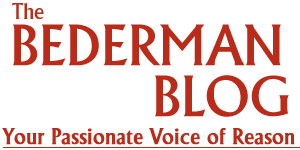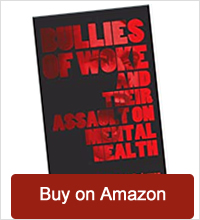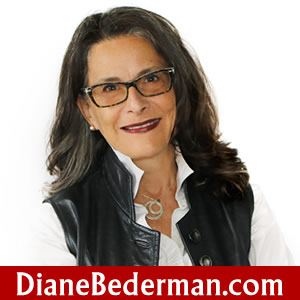All of us in our lifetimes have set before us a table filled with blessings and curses. Which is which? That is the decision that we make. All of us.
There has been a great deal of discussion about mental illness in the Canadian media the past few weeks. Our mental health care system is failing. Every once in a while I read something rather funny about mental illness. I read a great book filled with anecdotes about living with mental illness. Keep in mind that one in five people has been touched with mental illness. Think of the family and friends of these people. Of us. In all probability you know people with mental illness-you just don’t “know” it.
“I feel that I am living on the razor’s edge between success and failure, adulation and humiliation-between justifying my existences and revealing my unworthiness to be alive.” Scott Stossel from the book My Age of Anxiety , fear, hope, dread and the search for peace of mind.
I read the most unbelievable treatment for anxiety brought on by the imminent approach of speaking in public. It’s the kind of anxiety that grabs the stomach, leaving one buckled over-fearing a gushing -from one end or the other-is about to take place. The treatment is drug based and timed to kick in just when most needed: before that speaking engagement!
Here is the treatment.
Four hours ahead of speech-half milligram Xanax. Three hours ahead-another half milligram Xanax with a shot of Inderal-a beta blocker to stop the physical responses to fear/anxiety/panic like sweating, trembling, nausea, burping, stomach cramps, throat and chest constriction that obviously would interfere with public speaking. Pills are usually swallowed with a shot of scotch or vodka. The alcohol works with the Inderal to keep the throat open and the chest from constricting preventing speech. A swig is also taken about half hour before the lecture. And voila. The panic is stopped in it tracks:
If the dosage and number of medications including alcohol hit “the sweet spot,” that is “the perfect combination of timing and dosage where the cognitive and psychomotor sedating effect of the drugs and alcohol balances out the physiological hyperarousal of anxiety”!
This is one of many anecdotes shared by Scott Stossel in his book My Age of Anxiety , fear, hope, dread and the search for peace of mind. Just the title alone touches my anxiety button. Scott suffers terribly from anxiety. He’s a writer and a public speaker. It’s a miracle that he can do this. When you read his history, his genetic and epigenetic predispositions to anxiety and then read his passage toward peace, it’s amazing that he manages to get up in the morning, let alone go out in public and speak and then meet a book deadline.
This is a story that is filled with anguish and extraordinary hope. I felt as if Stossel were taking residence in my soul or that my soul had been ripped out of my body to be taken along on his ride. I found myself laughing from the descriptions of his methods of dealing with inexorable anxiety. But it was that kind of laughter that is embarrassing-like the nervous laughter that sometimes comes out at the most inappropriate times-like a funeral. It isn’t that you find it funny, haha, it’s more that the wires got crossed.
Scott takes us with him on his self-discovery from Hippocrates to the present; from melancholy to depression, and the complete dictionary of the nature of anxiety. There’s no subject not analysed. He provides research that speaks to the efficacy of each therapy and each drug. He provides a beautiful history of psychiatry and psychoanalysis. We are privy to his talk therapy sessions, his successes and many failures. There’s no detail too small that he doesn’t share.
But the mind truly boggles when reading his descriptions of the medications he requires getting on a plane or to get up and speak in public. As he takes you through his entire drug history he provides the science behind each new drug discovery and a play by play reaction to them. Unbelievable that he remains standing. He wrote a chapter called “A Sack of Enzymes” and repeated the information that a Harvard psychopharmacologist gave him:
“Your anxiety has a biological, physiological, and genetic basis. It is a medical illness like diabetes.”
Yet he lives a good life. He got married. I couldn’t believe he was able to get married-find someone willing to share his anxiety-ridden life. They have children. And he writes about his concerns for his children, his attempts to keep anxiety at bay.
“Are we doomed by neurocircuitry?” asked Stossel of his doctor. “No,” the doctor answered, “you are not doomed. We now know enough about neuroplasticity to understand that the circuitry is always growing. You can always modify the software.”
Stossel wasn’t embarrassed to share that he, his daughter and mother are always at “DEFCON 4alert.” They are “high-octane worriers” that keep them “generally nervous and more likely to experience intense negative emotion when exposed to frightening stimulus than someone with a low-reactive uninhibited temperament.” I know that feeling.
But take hope all ye suffering from anxiety. There is a role for anxiety in evolution!
Stossel explains why some of us evolved to be fearless and others fearful-of everything. And why those of us who are more fearful tend to think the worst right away. I don’t stand on the sunny side of the street no matter how bright and pretty it appears. I’m meant for the darker side. And my first response to anything untoward is one of quiet panic. But I offer no apologies. There’s creativity in that place.
Think of Van Gogh. A truly tormented soul who gave us some of the most beautiful artwork that speaks of the sun. And Freud, whose anxiety required medication so he took cocaine in order to keep himself calm enough to write about the human psyche. And Charles Darwin suffered so much he stayed home, in his home, after his voyage on the Beagle, to write his opus on evolution. Isaac Newton kept his calculus to himself for ten years because he was too anxious and depressed to talk about it. Emily Dickinson was housebound from anxiety. Then there’s Franz Kafka and Woody Allen. Barbra Streisand didn’t perform for more than two decades because of anxiety.
My anxiety leads to depression. The best practice for this is to avoid anxiety. Oh so easy to say. I find it humorous when people give me advice. It’s like telling someone in the midst of a meltdown-“Calm down!” If I could calm down I would, and I wouldn’t need you to say it. If I could side-step the anxiety and the trip into depression, I would. And often I do. But like Stossel, and everyone who deals with hyper-anxiety, we carry on. We find ways to cope. So far I am not in the same stratosphere of anxiety as Mr. Stossel but I have my tricks. I walk. That’s good. And often while I walk, I talk, out loud, to myself, and my dog, who tends to scamper off as soon as we enter the park. Can’t blame him!
I ask questions and then answer them. I take sides on an issue that is upsetting me-at least two. I find that talking to myself helps me almost as much as talking to my therapist. I knew I could leave my therapist when I was able to answer my own questions in a way that calmed me down. Therapy by telepathy.
There are days when I know that if I don’t stop the worry, the anxiety, the fear that creeps in with it, I will go down into the abyss. And those days I’ve turned to fine wine despite the fact that alcohol is verboten, counter-indicated, when taking anti-depressants. It has to do with the liver and self-medication going haywire. And the possibility of concurrent disorder. Robin Williams comes to mind. But the alcohol calms me down. Didn’t quite understand the whole process-why it worked so well, until I read Stossel. I am grateful to him for his science-based explanation because it helped take away the fear of a glass of wine, one, when over the edge and on the way down into the pit.
When you read Stossel’s book I hope you will come out the other side with more empathy for those with mental illness and greater respect for those who do great things in spite and despite the illness.
Stossel’s book is a testament to the resilience of the human spirit to great adversity. Stossel bequeaths to us hope when he writes about Jeanette Winterson’s observation: “the proximity of wound to gift.” He wrote:
“My anxiety remains an unhealed wound that at times holds me back and fills me with shame-but it may also be at the same time, a source of strength and a bestower of certain blessings.”
How true. All of us in our lifetimes have set before us a table filled with blessings and curses. Which is which? That is the decision that we make. All of us.


